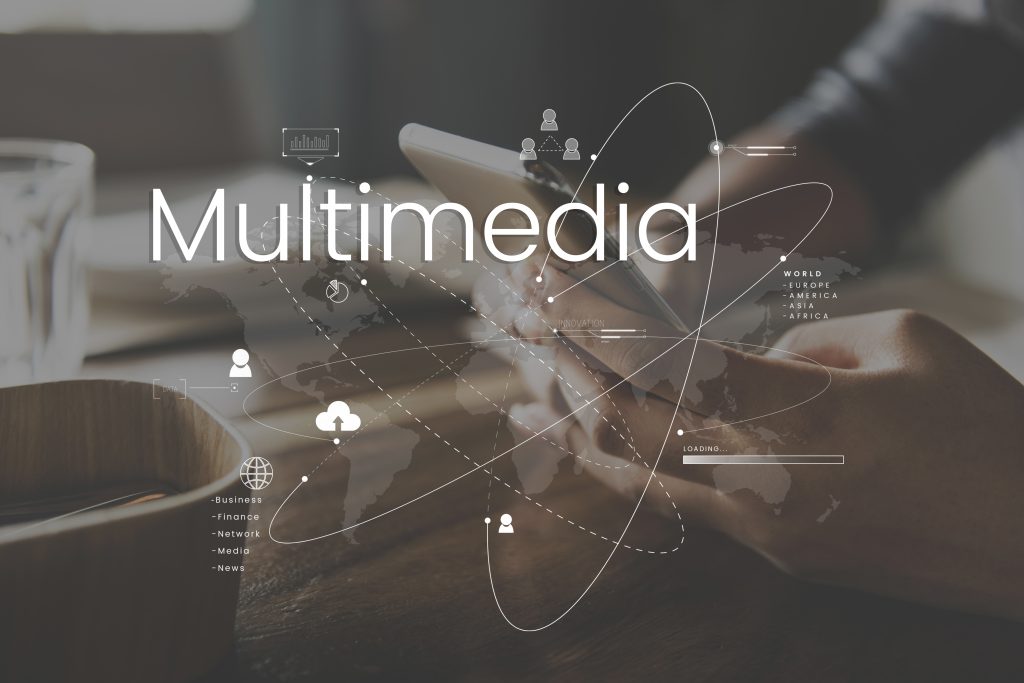
OK, aspiring instructional designers, take note: mastering multimedia design is the key to crafting visually appealing and interactive learning materials that captivate and engage learners.
Nightmare, huh!
Let me explain why – this article explains why I think acquiring skills in graphic design, video editing, and multimedia production is paramount for anyone venturing into the realm of instructional design.
But don’t worry, it’s not essential when you start out. There are replacement options for all these topics – however, if you continue to use stock icons and graphics, your e-learning will suffer. Ideally, you’ll learn the basics of instructional design and how to create digital learning first, and then you can add these extra skills later. They are crucial if you’re going to progress in the world of instructional design.
The Power of Visual Appeal in Learning:
1. Engagement Through Graphics:
Visual elements are not mere embellishments; they are powerful tools to capture attention and enhance comprehension. Acquiring graphic design skills allows instructional designers to create visually compelling infographics, diagrams, and illustrations that add extra explanation to complex concepts and make learning memorable.
As I said, you can use stock graphics and downloads from places like Freepik.com when you start out. But consider learning to use graphics software (like Adobe Illustrator, for example) at some point to enhance your courses.
2. Storytelling Through Video:
Video is a dynamic medium that extends the boundaries of traditional teaching. Learning how to edit videos empowers instructional designers to weave narratives, explain intricate topics, and provide real-world examples. From screencasts to animated explanations, video editing skills add a layer of richness to the learning experience.
And this one isn’t as tricky to pick up as learning to create graphics. (Don’t get me wrong, experts in both have mad skills that make me awestruck, but for an instructional designer, there are simple things you can do that make all the difference.)
3. Interactive Multimedia Production:
The ability to produce interactive multimedia elements elevates instructional design to new heights. Incorporating quizzes, simulations, and interactive presentations not only engages learners actively but also caters to diverse learning styles.
Mastering multimedia production tools enables the creation of dynamic and immersive learning environments. Luckily, learning to use e-learning development software such as Articulate Storyline 360 or Adobe Captivate have incorporated these types of interactive multimedia within their programs. They’re so easy to set up, there’s no excuse for not including them.
Skills to Acquire:
1. Graphic Design:
As I mentioned, investing time to learn graphic design tools such as Adobe Illustrator, Canva, or Inkscape will be useful. It also helps to understand the principles of design, colour theory, and typography so that you can create visually cohesive and impactful learning materials.
2. Video Editing:
Familiarise yourself with video editing software like Adobe Premiere Pro, Final Cut Pro, or simpler tools like Camtasia. Learn the basics of cutting, transitions, and adding audio to create engaging and polished educational videos.
3. Multimedia Production:
Explore multimedia production tools like Articulate Storyline, Adobe Captivate, or H5P. These platforms allow you to integrate various multimedia elements seamlessly into your courses, providing interactive and engaging learning experiences.
Why Multimedia Design Matters:
1. Catering to Different Learning Styles:
People learn in diverse ways—some through visuals, others through auditory cues, and some through hands-on activities. Multimedia design allows instructional designers to create content that caters to various learning styles, ensuring a broader and more inclusive educational experience.
2. Enhancing Information Retention:
There’s loads of research around that consistently demonstrates that multimedia elements enhance information retention. Well-designed graphics, engaging videos, and interactive content capture attention and also help learners retain and recall information more effectively.
3. Creating Engagement:
In a digital age where attention spans are fleeting (thanks TikTok!), engagement is key. Multimedia design provides the tools to craft content that is informative and captivating, building a genuine interest in the learning material.
Tips for Success:
1. Stay Updated on Design Trends:
The field of design is constantly changing and evolving. Stay updated on current design trends to ensure that your learning materials remain visually appealing and resonate with your target audience.
2. Practice Regularly:
Like any skill, multimedia design improves with practice. Dedicate time to experiment with different tools, explore new techniques, and continually refine your design and editing skills.
3. Seek Feedback:
Don’t shy away from seeking feedback from peers or potential learners. I know it’s scary, but constructive criticism can provide valuable insights and help you refine your approach to multimedia design.
In the realm of instructional design, the ability to wield multimedia design effectively is a game-changer. As you embark on this creative journey, remember that each graphic, video, or interactive element is an opportunity to enhance the learning experience and leave a lasting impact on your audience. So, dive into the world of multimedia design, unleash your creativity, and become a master of instructional innovation. The future of education is in your hands.

